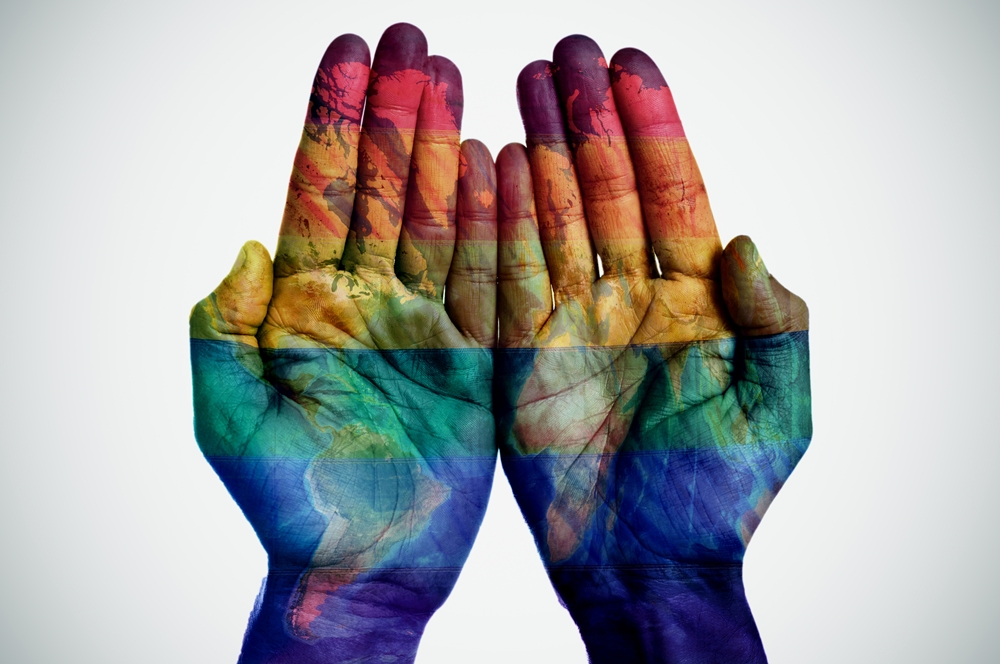Recently I was talking with some colleagues and one said he’d had it up to here with the subject of transgender bathrooms. “Ever notice that the only countries that have trans people are America and Europe?” he said.
Now Karl’s basically a nice guy, just a little rough around the edges. Instead of getting upset, I took the opportunity to correct his misinformation. Like a lot of people, he simply doesn’t know many transgender people and wasn’t aware that there are many trans traditions around the world, throughout history.
Discover beautiful trans women now at TSmeet.com!
Even if you’ve met and dated trans women who are aboriginal, Chinese, French, Australian, Israeli, or Mexican; you may not know about the rich, colorful heritage of trans women around the world.
Trans Traditions around the World
Kathoey
You’ve likely heard of geisha in Japan. In Thailand, there is also an ancient custom where women of a certain cultural aesthetic are skillful, artful entertainers. They are kathoey girls.
You’ve probably heard Asian trans women or their admirers referred to as ladyboys. This is sometimes considered pejorative, just like the term kathoey itself, because some folks use them as a slur.
But they aren’t—they refer to an old tradition that honors “a second kind of woman” or “third gender.” Kathoeys are male-born individuals who exhibit feminine traits or identify as female, or who have undergone some procedures akin to transitioning.
Kathoeys usually work as cabaret performers, dancers, singers, models, and beauticians.
Hijra
Indian culture has long acknowledged the hijra—women who were born male and who are considered a third gender. They trace their roots historically to Hindu deities.
For very religious people, hijras can mean a special caste of devotees to Hindu mother goddess Bahuchara Mata.
Becoming a hijra entails a socialization process with a teacher who helps the hijra assume her femininity. The culmination of the journey is castration. In modern day, some hijra undergo sex-reassignment surgery instead.
Bugis
As is common historically around the world, such as the hijra of India, folks with gender variants are considered as spiritually special in Bugis society. An ethnic group in Indonesia, the Bugis have five genders including makkunrai, oroané, bissu, calabai, and calalai.
The bissu are considered “gender transcendent” and either merge or transcend the qualities of all genders. They are free to enter the roles, tasks, and spaces of both men and women as they wish.
Quariwarmi
Another example of gender variants acting in a sacred context is in precolonial Incan ceremonial rites. Ritual attendants of the jaguar deity were quariwarmi, which translates loosely to “men-women” who dressed and emulated women.
They were a shamanic force who invoked the presence of the Andean gods by symbolizing simultaneously the male and female, the past and present, the living and the dead.
Winkte
From the Lakota word “winyanktehca” comes “winkte,” meaning “wants to be like a woman.” These American aboriginal people were assigned as male at birth but adopted the mannerisms and clothes considered feminine by the Lakota people.
These are just five examples of literally hundreds, from every corner of the globe, from all eras of history. In some societies these gender variations were revered, in others discriminated, and in most, a mix of both. The more we understand how humans have addressed and interpreted gender, the more we see the incredible range of social roles and relationships.
Tell us more about transgender traditions in your background!

Tell us what you think